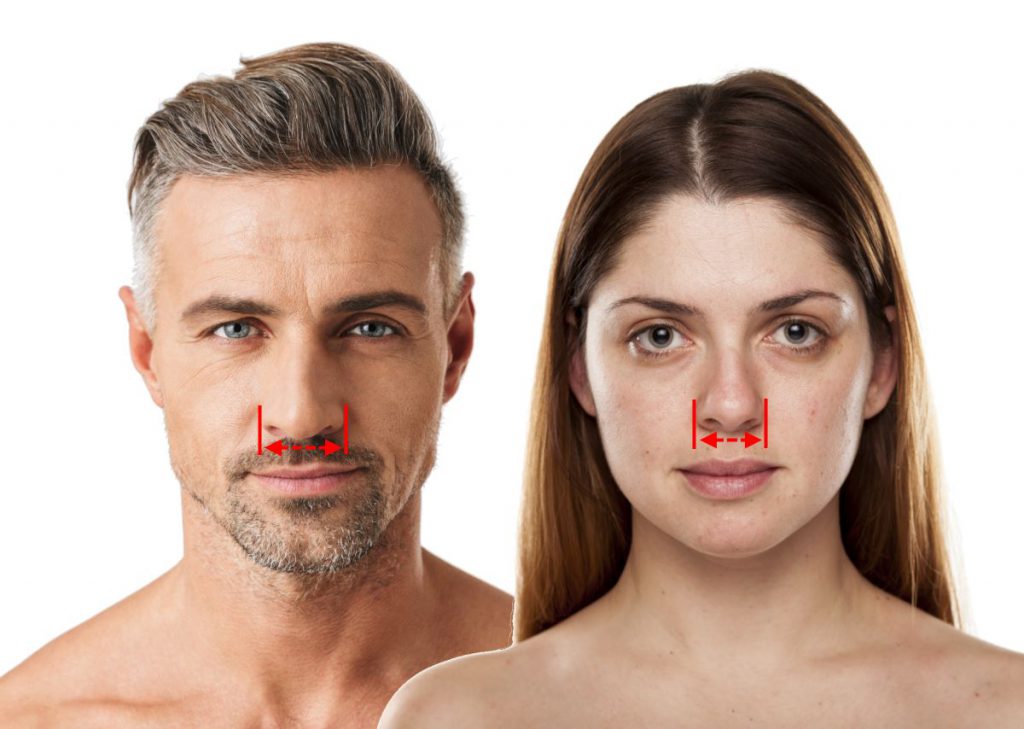Summary
Skomina et al. (2020) found that men typically have wider mouths and bigger noses than women. This results in different mouth-width to nose-width ratios between the genders. Women generally have a smaller ratio, indicating narrower mouths in proportion to their noses, making it a feminine feature. This observation is supported by the changes seen during puberty, where hormonal shifts cause facial features to masculinize or feminize. As described in “Essentials of Facial Growth” by Enlow & Hans (1996), males’ jaws broaden, increasing their mouth width. Mikalsen et al (2014) further explained that males usually have larger noses than females due to sexual dimorphism. Consequently, the larger growth rate of the mouth compared to the nose in males gives them a higher ratio, considered a masculine characteristic, while the evolutionary preference for smaller female noses results in a smaller ratio, deemed feminine.
Research
According to Skomina et al. (2020), men generally have wider mouths and larger noses than women. A smaller ratio of mouth-width to nose-width means the mouth is narrower compared to the nose. This is often seen as a more feminine feature. Why? Because, according to this study, on average, women tend to have slightly narrower mouths and smaller noses compared to men. So, when comparing the width of the mouth to the width of the nose, the ratio tends to be smaller for women.

During puberty, the human face experiences significant transformations due to an influx of sex hormones. As noted in “Essentials of Facial Growth” by Enlow & Hans (1996), these changes lead to the masculinization or feminization of facial features. Specifically, males tend to develop broader jaws, resulting in an increased mouth width relative to females. Furthermore, Mikalsen et al (2014) highlight that males typically have larger noses than females, which is an example of sexual dimorphism. Consequently, if males have both broader mouths and larger noses, but the mouth width increases proportionally more than the nose width, it would result in a larger mouth-to-nose ratio, thus being deemed masculine. Conversely, evolutionary preferences lean towards females with smaller noses, contributing to a smaller mouth-width to nose-width ratio, making it a feminine trait.

Reference
Skomina, Z., Verdenik, M., & Hren, N. I. (2020). Effect of aging and body characteristics on facial sexual dimorphism in the Caucasian population. PloS one, 15(5), e0231983. https://journals.plos.org/plosone/article?id=10.1371/journal.pone.0231983
Enlow, D. H., & Hans, M. G. (1996). Essentials of facial growth. American Journal of Orthodontics and Dentofacial Orthopedics, 110(5), 568.
Mikalsen, Å. K. R., Folstad, I., Yoccoz, N. G., Laeng, B., 2014. The spectacular human nose: an amplifier of individual quality? PeerJ . 2. e357. https://doi.org/10.7717/peerj.357